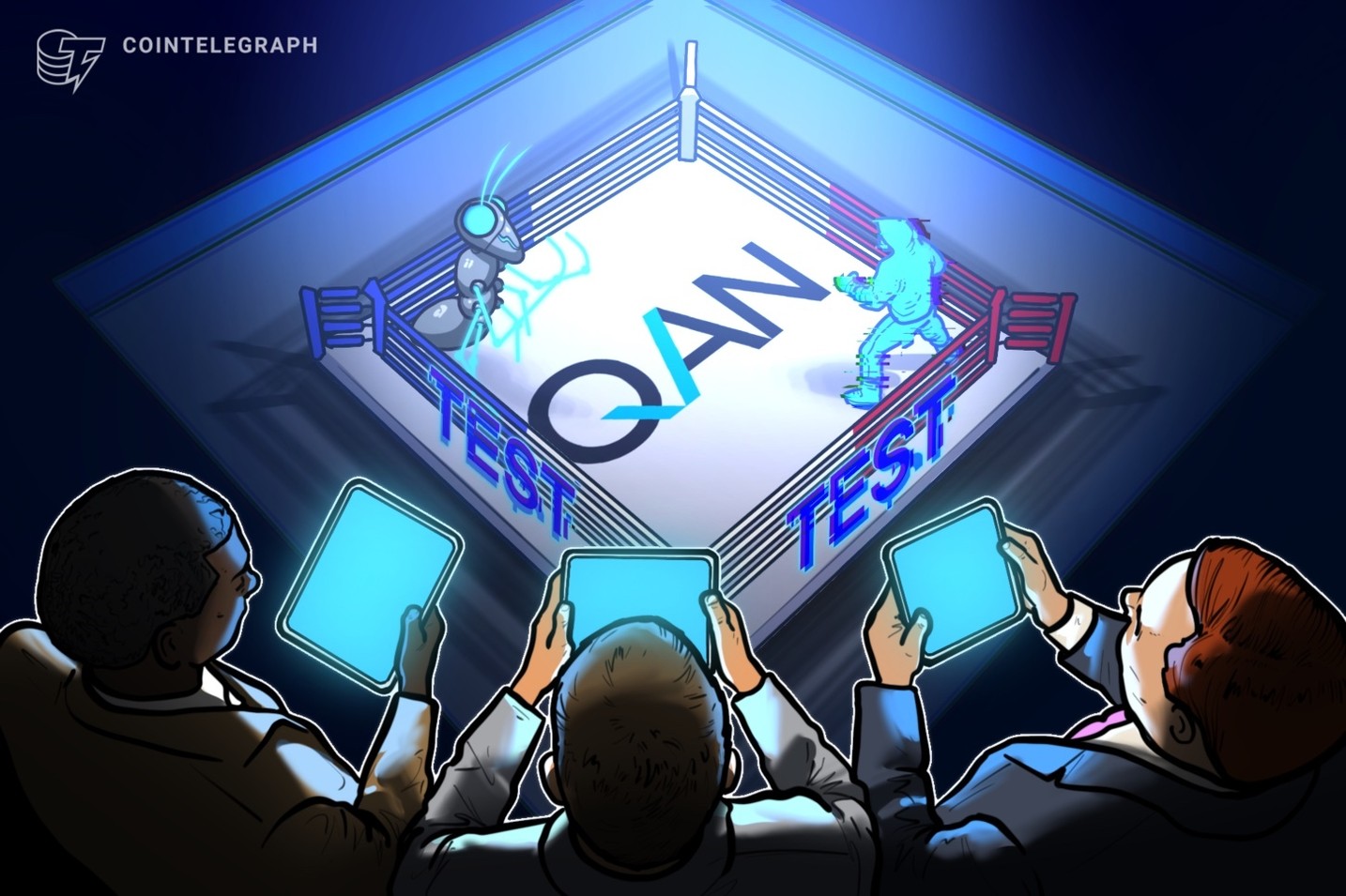Sponsored Content
QANplatform and Hacken have released an AI-assisted blockchain threat modelling tool, designed to take auditing beyond simple code checks.
Cryptocurrency has become a trillion-dollar space that processes billions of dollars worth of digital assets daily, powering a wide range of use cases.
Unlike traditional systems, blockchains operate without a safety net — no centralized rollback, no customer support line. A single vulnerability in a smart contract can trigger irreversible consequences.
Security audits are designed to catch these issues early. However, modern blockchain networks are getting increasingly complex. Decentralized finance (DeFi) protocols interact with dozens of external contracts, layer-1 platforms experiment with custom runtimes. Each addition expands the potential attack surface, and human auditors — no matter how skilled — have limits.
Artificial intelligence becomes a handy tool to overcome such limitations by generating realistic threat scenarios, simulating interactions at scale and identifying vulnerabilities that static analysis or manual review might miss.
AI-assisted audit arrives
QANplatform, known for its quantum-resistant hybrid layer-1 blockchain, has partnered with Web3 security firm Hacken to release an AI-powered blockchain threat modeling tool.
The new open-source tool helps developers and auditors define audit scope, simulate attacks, write test cases and execute them. It is compatible with a myriad of large language models, including DeepSeek, Kimi K2, Claude and ChatGPT o3.
We are thrilled to announce a significant milestone in the journey to a robust and secure #QANplatform MainNet: the QAN Virtual Machine (QVM) has successfully completed a comprehensive security audit conducted by leading blockchain security firm, Hacken (@hackenclub). Dive into… pic.twitter.com/FGgdw8CAGh
— QANplatform (@QANplatform) July 29, 2025
Once it has been customized by a developer, the tool can also be run locally, offering teams full control over infrastructure and data privacy. From early-stage development to formal audits, the tool adapts to a wide range of security needs — even in complex or resource-constrained environments.
Born out of a test
The new tool emerged out of a challenge: auditing the QAN Virtual Machine (QVM). It is an innovative virtual machine capable of running smart contracts written in any programming language, giving developers flexibility beyond traditional blockchain platforms. The goal is to make Web3 development accessible to traditional software teams, without forcing them to learn new domain-specific languages.
But such flexibility comes with increased complexity, and with it, a necessity for a more expansive security model. Manually mapping the attack surface of a multi-language blockchain VM would have taken months, if not years.
Hacken and QANplatform carried out a deep audit to prepare QVM for deployment. The blockchain threat modelling tool is the fruit of that audit.
During the QVM audit, the AI-assisted process generated over 2,800 test cases. The process surfaced 22 potential issues, some involving edge-case behavior unlikely to be flagged through traditional methods alone. The audit wasn’t limited to the code layer; it was able to model hypothetical attack scenarios, helping the audit team challenge assumptions and reframe the risk surface.
The tool is already available for testing. Interested users can experiment with the tool on Hacken’s GitHub.
Toward a secure, accessible Web3
“Hacken’s custom-built AI agent was tailored specifically for QAN and delivered outstanding results,” said Dyma Budorin, co-founder and CEO of Hacken, highlighting how the tool turned out to be an exemplary offer for the Web3 space:
“This isn’t a replacement for traditional audits but a powerful upgrade. We welcome QAN’s decision to make it open source, as it gives the Web3 community a real-world example of how new technology can enhance security.”
Meanwhile, Johann Polecsak, co-founder and chief technology officer of QANplatform, stressed how the new tool aligns with the mission of the platform:
“We are proud of the successful QVM audit and excited to release the open-source AI tool together and follow QANplatform’s mission: Empowering anyone to build rapidly and securely on the blockchain.”
As blockchain infrastructure matures, security tooling must evolve alongside it. The new model by QANplatform and Hacken shows how AI can complement expert review — bringing scale, speed and new angles of insight to a process critical to Web3’s future.
Disclaimer. Cointelegraph does not endorse any content or product on this page. While we aim at providing you with all important information that we could obtain in this sponsored article, readers should do their own research before taking any actions related to the company and carry full responsibility for their decisions, nor can this article be considered as investment advice.
